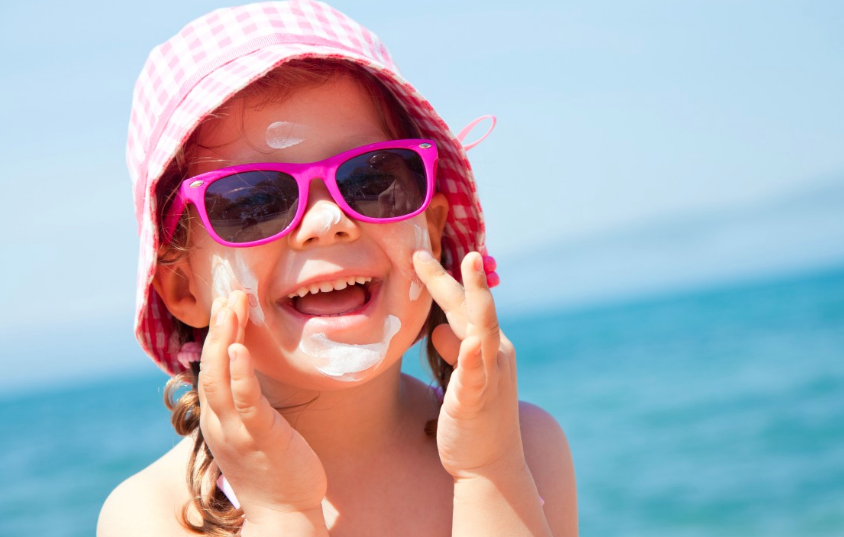Children have sensitive skin that can easily be damaged by exposure to ultraviolet (UV) radiation (rays) of the sun, even on cloudy or overcast days. Too much sun exposure can cause sunburns, heat stroke/heat exhaustion, skin cancers, cataracts and other eye diseases. During warmer months, a child’s sensitive skin can also be burned by touching hot surfaces such as the pavement, outdoor metal slides or car doors.
Given outdoor play, much of our exposure to UV rays occurs before we are 18 years of age. By the time we are adults, many of us have soaked up more than enough UV rays to cause skin cancer. By protecting children from sunburns and too much sun exposure, you can significantly reduce their risk of developing skin cancer.
How can I protect my child from sun exposure?
Try to keep toddlers and children out of the sun during the peak hours of 10 a.m. to 4 p.m. This is when the sun is the strongest. When you are outside, look for trees and other naturally shady areas for children to play. If possible, use a sun umbrella if you can’t find a shady spot. If you cannot keep your child out of the sun, make sure to protect their skin with “sun smart” clothing and sunscreen.
Sun Smart Clothing
Encourage your child to be “sun-smart.” Make sure they cover up with loose, appropriate clothes. Closely-woven cotton material offers natural protection from the sun. If you can see through the clothing easily, then UV rays can get through too. A long-sleeved shirt and pants are the best clothes to protect the skin. A wide-brimmed hat without ties, especially one that covers the neck, is recommended. Avoid baseball caps that do not shade the ears or back of the neck. You may consider purchasing lightweight, sun-protective swimsuits and hats that are specially designed for swimming and playing outside.
Sunscreen
Dermatologists strongly recommend a sunscreen with UVA and UVB protection and a Sun Protection Factor (SPF) of 30 or more if you and your child are out in the sun. Use a lip balm with SPF 30 as well.
For a small number of children, the chemicals in some sunscreens can trigger a skin rash or burn when exposed to the sun. Do a patch test on a small area of skin before applying the product more widely, or use a mineral-based sunscreen that contains zinc or titanium to minimize the risk of a skin reaction.
Apply sunscreen 30 minutes before exposure to the sun so it is absorbed by the skin and less likely to rub or wash off. Apply the sunscreen according to instructions on the package and reapply every couple of hours, after swimming, or following active play time. Swimmers and those who sweat heavily should use a waterproof lotion.
For children wearing bathing suits, make sure that sunscreen is applied up to and under the edges of the suit to protect sensitive areas, such as the upper thighs and chest. Pay particular attention to the ears, back of the neck, tops of feet and the back of the knees. Be careful when applying sunscreen near the eyes. It can be irritating, so avoid the upper and lower eyelids.
Sunscreens, like many other products, have a limited shelf life and become less effective over time. Check the expiry date of old sunscreen containers and replace them if they are out of date.
If you’re looking for a skilled dermatologist for your child, we welcome you to visit our comfortable offices in Los Alamitos and Agoura Hills. Pediatric dermatology is one of our key areas of specialization. Our place is kids-friendly and cozy, so your child won’t be overstressed by the visit and will get the best medical help possible. Schedule an appointment for your child today.

